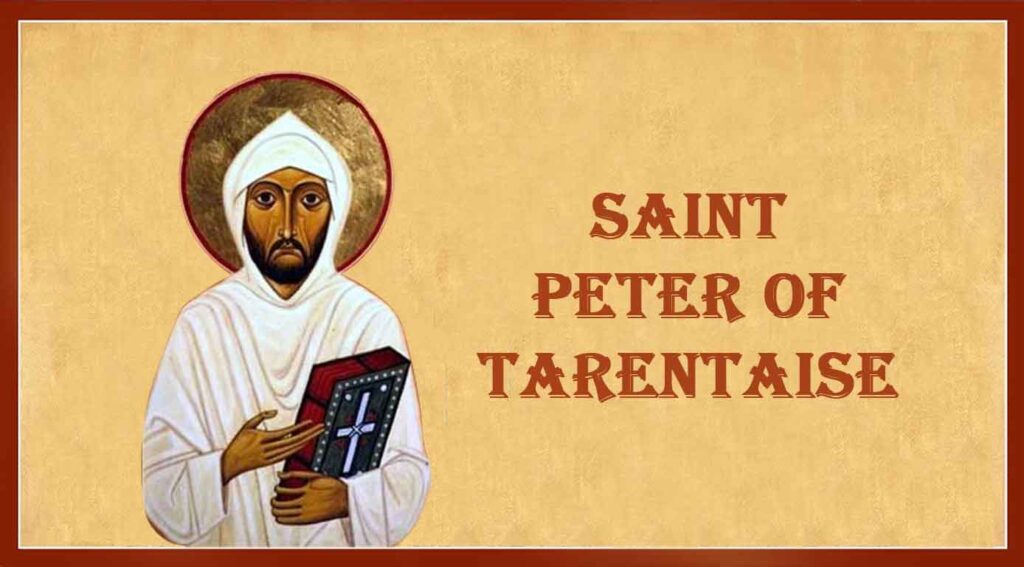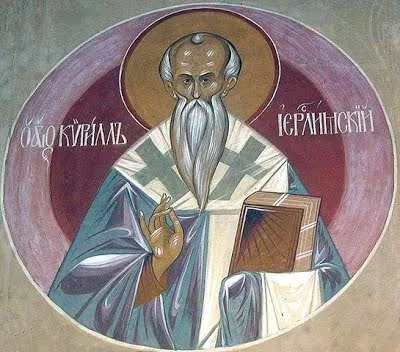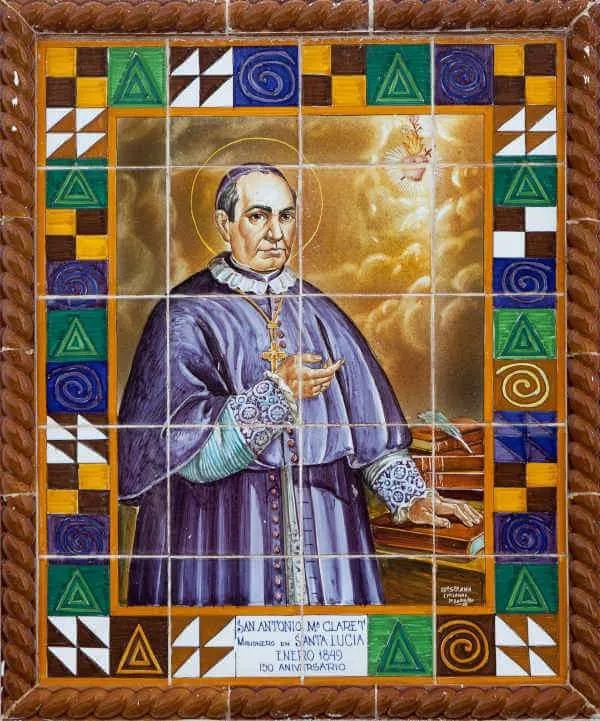Saint Peter of Tarentaise was born in 1102 on a farm near Saint-Maurice-l’Exil, not far from the Cistercian Bonnevaux Abbey. He was a Cistercian monk who served as the archbishop of Tarentaise (as Peter II) from 1141 until his death.
In 1132, Saint Peter, his abbot, and twelve other monks founded Tamié Abbey in a defile of the Bauges mountains, as a daughter house of Bonnevaux. Once Abbot John was satisfied that the monks had adequate shelter, he returned to Bonnevaux, leaving Saint Peter as abbot of the new monastery. In 1142, at the insistence of his superiors including Bernard of Clairvaux, Peter reluctantly accepted the position as the Archbishop of Tarentaise.
In his episcopal role he applied the Cistercian principles he had learned as an abbot to restore the diocese and met with a good deal of success since the diocese’s management had declined and discipline lax. He removed corrupt priests (and elevated good priests to important pastoral positions) and promoted education for all the faithful
He rebuilt a hospice in poor repair at Little St. Bernard Pass. He also founded a charity which distributed food to farms in the surrounding hills. This would become known as pain de Mai and became a tradition continued in the region until the French Revolution.
He longed for the simple and pious life of a monk. In 1155 he disappeared and was later found as a lay brother in a remote convent in Switzerland. After about a year, when the monks discovered who he was, they alerted the archdiocese. Saint Peter was reluctant to emerge from his newfound solitude but was welcomed back into his archdiocese with much enthusiasm on the part of the people.
Saint Peter of Tarentaise died in 1174 as he attempted to mediate between feuding monarchs after a serious but brief illness. Miracles were reported at his tomb after his death and this led Pope Celestine III to canonize Peter as a saint in mid-1191.








